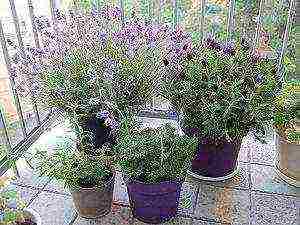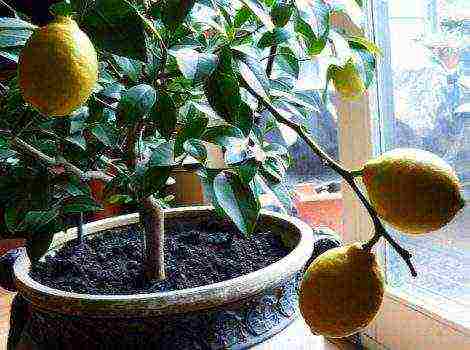Content
There are a number of hosts that are not recommended to be planted immediately in the ground, where at first they will feel oppressed and may be the victim of malicious snails or slugs, which adore their delicate and thin leaves.

Until hosts form a fairly dense bush, they are best grown in plastic containers (pots).

Florists recommend placing a layer of rotted manure on the bottom of the container (pot) on top of the drainage in order to provide the plant with additional nutrition. To avoid excess evaporation of moisture, the surface layer of the earth must be mulched.
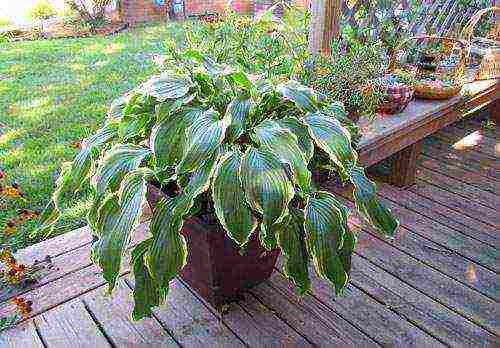
The advantage of container growing hosts is that the plant can be rearranged not only horizontally, but also decorate the resting places with tiers, for example, inside the gazebo, where there is not enough light. The potted host is decorative throughout the season and does not require replacement with other plants.
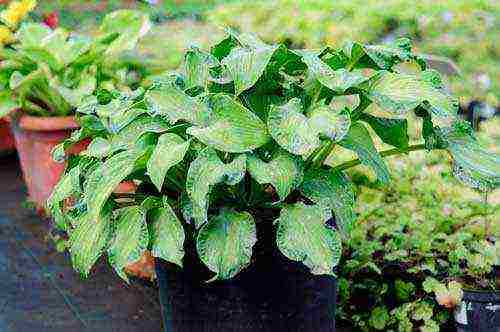
Pot requirements for hosts
Hosta pots should hold the right amount of soil and fit the size of the plants. Also important are the holes for water drainage, as well as drainage. Young plants are first planted in small containers; as they grow, they must be transplanted into larger pots over time.

The host in the container needs frequent watering and feeding, since the nutrients are washed out with water.
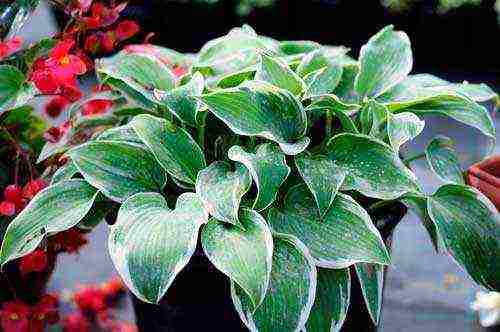
It is very important to place the hosts so that the sun does not warm the pots. Otherwise, the roots that have reached the walls will get burned. Of course, it is best to bury them in the ground.

In winter, containers with hosta should not be left outdoors, the plant may rot or freeze out. The hosta pot must be brought into a dry, cool room.
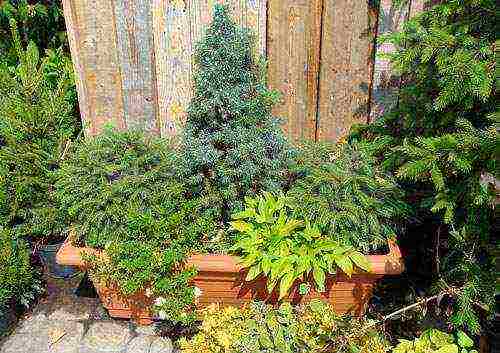
It would be nice to check the condition of the soil once a month, because its drying out is very destructive. For hosts - you need timely, light watering.
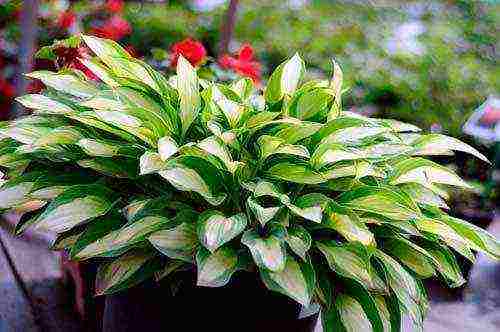
Such plants wake up much faster in spring than plants overwintering in the open field. And if the hosta has grown, do not rush to take it outside until the frost has passed. During the day they can be outside, but at night they should be returned to the room.
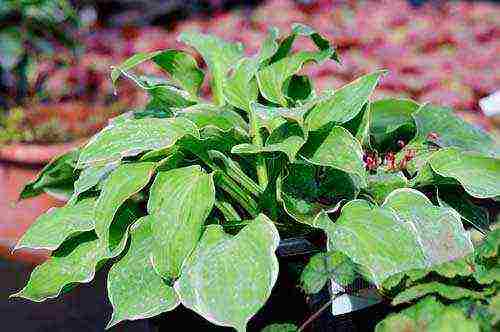

Other host entries
Hosta is a charming and mysterious Asian woman. For more than a decade, she has been decorating the shady corners of our gardens, rightfully earning the title of "queen" of the shade. Its bell-shaped flowers are rather modest, but the main advantage of the hosta is not they, but the leaves: ...
What is the best way to combine hosts when disembarking?
Now it is difficult to imagine how you can do without a host in the garden. But some 10-15 years ago, few of us guessed about their huge variety. In culture, there were only a few species and natural forms. Host Twist ...
In the fall, I planted 3 hosts. I mulched it with sawdust. They started to grow a little, as the autumn was long and warm. In the spring I removed the sawdust. The kidneys are still not visible. Maybe it's too early and I'm worrying in vain?
How to make a proper and beautiful hostary?
Tell me the names of the varieties of the tallest host
See all materials
about hosts :
See all
Several years ago I decided to plant a hosta in a pot. I really liked its leaves, I did not hope for flowering. The first year a gorgeous bush has grown and even bloomed!
In the following years, the leaves became smaller and smaller, and there were no more flowers.This spring, I wanted to give the host to a friend in the front garden (I live in an apartment), but circumstances interfered, and the plant remained on the windowsill, only the soil was completely changed. The leaves came out in the spring, but smallish.
And what was my surprise when today I discovered FLOWERS! Just beautiful!
Residents of SM, and any of you raised the host at home? Share your experience of care, pliz!


P.S. On the left is Dracaena.
The host is called the "queen" of shady areas and seating areas in the garden. This is a real emerald in the front garden, in any flower bed. Planting hosts and leaving in the open field will not cause much trouble for gardeners or summer residents. The flower can be propagated by division, cuttings and seeds.
When to plant hosta outdoors?
Planting begins in August and ends in September. These dates may shift depending on the weather and location of the region. It is necessary to calculate the planting time so that the hosts take root before frost. With the early onset of cold weather, young plants must be covered.

Most of all, the root zone needs winter shelter, on which brushwood or other suitable material is laid.
The host is divided and planted in the spring, before the leaves bloom. A plant with a root ball, purchased in a store or donated by friends, takes root better. Hosta can be stored briefly in the basement or vegetable section of the refrigerator until planting. They are planted in open ground when the threat of late frosts has passed.
Planting in open ground with seeds
Sowing hosta seeds is an opportunity to get a lot of seedlings and seedlings for landscaping a large area. The laborious procedure requires certain knowledge and skills. Unfortunately, seed-grown hosts do not always inherit the traits of the parent plant. This is especially true for variegated varieties.

Sowing procedure description:
- Seed propagation is carried out in early spring.
- Use a container, pot, or plastic box for germination.
- Drainage is poured at the bottom, the container is filled with a light fertile substrate.
- Water, spread the seeds, sprinkle on top with a layer of soil 0.5 cm thick.
- Cover with glass or foil, germinate in the shade, at a temperature of 20-23 ° C.
- The soil is often sprayed with water from a spray bottle.
Germination time varies from 7 days to 3 weeks. Usually shoots appear in 2 weeks. Seedlings are dived into other containers, quenched in the fresh air, but protected from direct sunlight. Seedlings develop slowly at first, acquire the characteristics of the variety only after 3-4 years.
Propagation by cuttings and dividing the bush
The most common methods for obtaining new plants are used when there is at least one bush at the age of 3-5 years. Propagation by cuttings and division is not recommended 1-2 years after planting. During this period, they give the opportunity to strengthen the underground and aboveground organs.
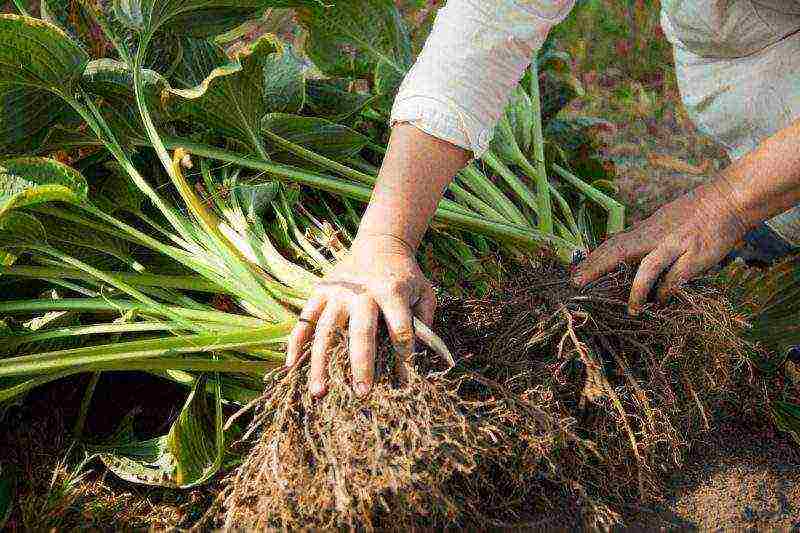
Dividing the bush and grafting allows you to get hosts of the same variety as the mother plant.
The best time for vegetative reproduction is in the spring, when shoots appear. The mother plant is carefully dug out, large lumps of soil are shaken off the rhizome, old and decayed parts are cut off. Cut the hosta with a shovel or sharp knife. Parts of a split bush must have buds and pieces of root.
Tips and Warnings:
- Only healthy plants are divided for planting.
- In the first few weeks, water is often watered, but without stagnant water.
- Hosts grow slowly after transplantation, especially variegated varieties.
- Young leaves in most cases have a solid green color.
- The characteristics of the variety are fully manifested after 2 years.
Cutting - the separation of a part with buds and a piece of rhizome - can be carried out from spring to autumn. Sometimes the procedure is unsuccessful, almost no roots remain, but there are buds, or there is no rosette, but there is a rhizome.Even such defective planting material is not thrown away. The cuttings are planted in the shade, covered with a cut plastic bottle. The missing organs gradually grow back, and full-fledged leaves are formed.
Proper care of a shade-loving plant
The hosta flower, in its homeland in Asia, is found in meadows, along the banks of rivers and lakes, on the shady edges of humid forests. It is recommended to create conditions for plants in the garden and in the flower bed that resemble their natural habitat.
Requirements for soil and location
You need a well-drained soil rich in moisture and nutrients. There are no special requirements for pH, moderately acidic and alkaline substrates are suitable. Variegated forms require shading at midday. Colored stripes and spots disappear in direct sunlight. Varieties with blue foliage also change color. Only monochromatic green forms retain their characteristics in the sun, but subject to good soil moisture.
Watering and fertilizing
The plant does not need frequent watering with sufficient rainfall and placement in a shady place. In the dry season it is necessary to water 2 times a week. The soil under the hosts should not dry out even in winter. In summer, you can pamper the leaves with an evening shower. Top dressing is also best done in the evening.
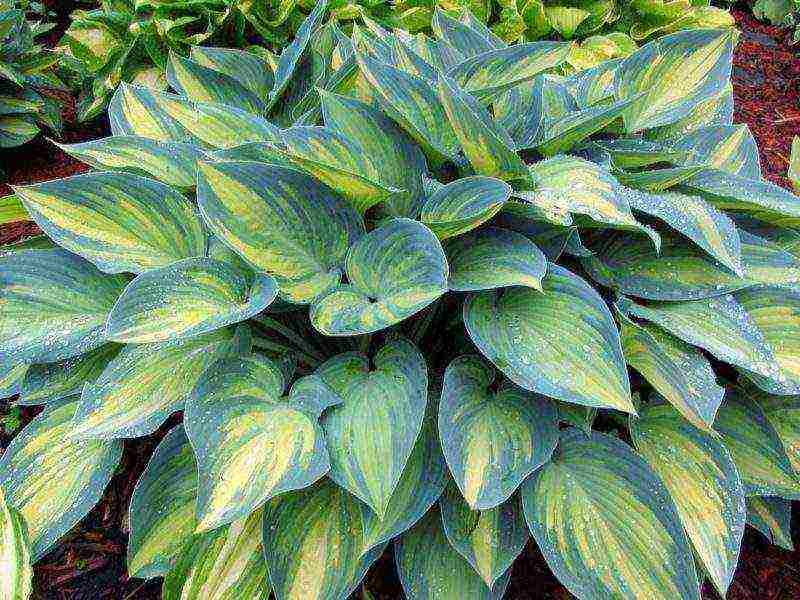
A young plant needs more care and nutrients, so fertilize it 2-3 times. In the spring, top dressing is carried out at the very beginning of the growing season. The next time they fertilize the soil during flowering. The third feeding is needed for plants after flowering. It is advisable to alternate the introduction of compost and complex fertilizers. Be sure to mulch the soil immediately after watering and feeding, but only without damaging the lower leaves of the plant.
Loosening, pruning, replanting
Hosta rhizome is located in the upper loose soil layer. Loosening is performed carefully so as not to damage the roots. Sometimes it is replaced by mulching after watering, then the soil retains moisture for a long time.
Peduncles are usually removed, but in beautifully flowering varieties, they are left and cut off before the seeds ripen (if there are no hosts in the seed reproduction plans). Dry and damaged leaves are pruned throughout the season. Experienced growers recommend leaving the foliage in the fall to protect the roots from frost.
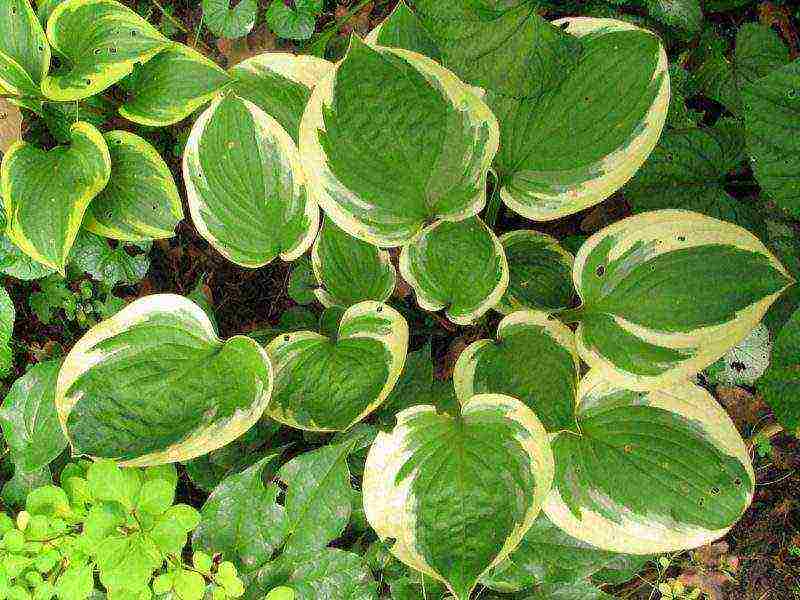
The best material for transplanting is plants with 2-3 buds and well-developed roots 10 cm long. The planting pit is made wide, because the underground organs grow in a horizontal direction. The depth should be at least 30 cm. A mixture of compost, garden soil, peat and sand is poured onto the bottom. Can be sprinkled with a handful of wood ash to normalize pH and disinfect.
The planting hole is filled with a substrate at 70% of the height, and abundantly moistened. The host is positioned so that the roots are on the surface of the moist soil, the growth buds are at ground level. Sprinkle with soil, compact and watered again. In conclusion, a layer of mulch up to 2 cm high is poured. Peat or sawdust is used as a mulching material.
Care at different times of the year
During the summer, the hosta is regularly watered, cut off dry parts, weeds are weeded. In the fall, after the first frost, the leaves begin to wilt. You do not need to cut or pluck them. The foliage protects the soil above the roots from freezing. Additionally, you can cover the plant with agrofibre. In the spring, the remaining leaves must be removed (plucked).
Growing hosts in the garden - diseases and pests
The plant is not very susceptible to disease, but it becomes infected from horticultural crops with phylostictosis (brown spot). A heavily affected hosta must be destroyed, the soil must be disinfected with a fungicide. Against pathogens of fungal and bacterial diseases, they are sprayed with biopesticides.
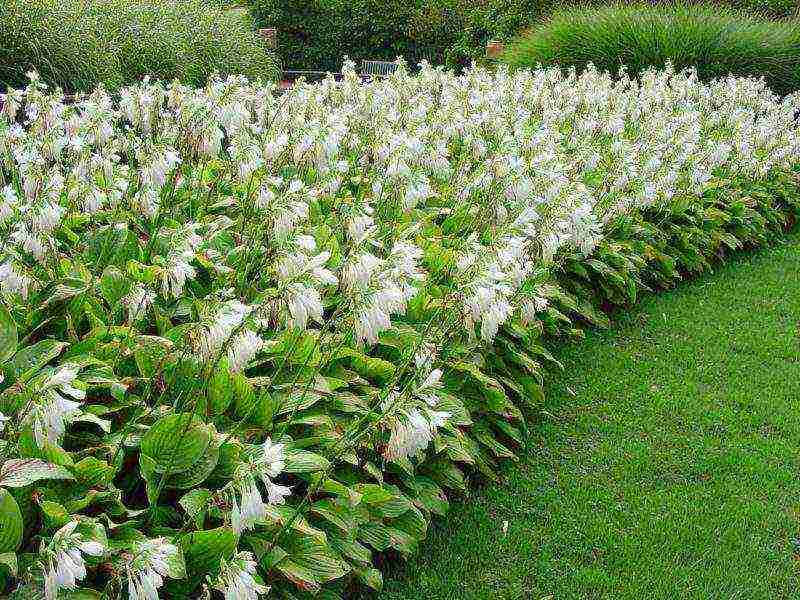
Slugs gnaw holes in the leaves, they become less decorative. Regular inspection of plants and removal of pests is recommended.If you can't fight, you can find planting material of resistant varieties in nurseries or flower shops. Slugs prefer soft tissues and are less likely to attack hosts with leathery foliage. Another option for fighting is to mulch the soil around the hosta with fine rubble or crushed shell rock. With good care, the plant remains healthy and attractive for 10 years.
Hosta in landscape design
A shade-tolerant plant with beautiful leaves helps out in cases when it is necessary to decorate the resting corners in the garden, the entrance to the gazebo. Blooming annuals and perennials look great against the background of lush greenery: bells, primroses, phlox. Varieties with bicolor and tricolor leaves are especially appreciated in landscape design. It is advisable to place such plants singly on the lawns, in small groups along the paths.

It is better to start growing hosts with varieties that have green foliage. They are less demanding in terms of conditions and care, they are easier to tolerate bright lighting and transplantation.
The host is great for mobile landscaping of the entrance to the house, terraces, gazebos. Plants in pots and containers are watered more often because the soil heats up and dries out faster. In the fall, remove old leaves and cover the container. At the beginning of spring, the protective layer is removed, the container is installed against the wall of the house.

Any use of hosts in landscape design should be considered in terms of the conditions that will be created for the plant. With proper care, the "queen" of the shade will not disappoint her fans, she will attract attention with a magnificent view of leaves and bell-shaped flowers.
